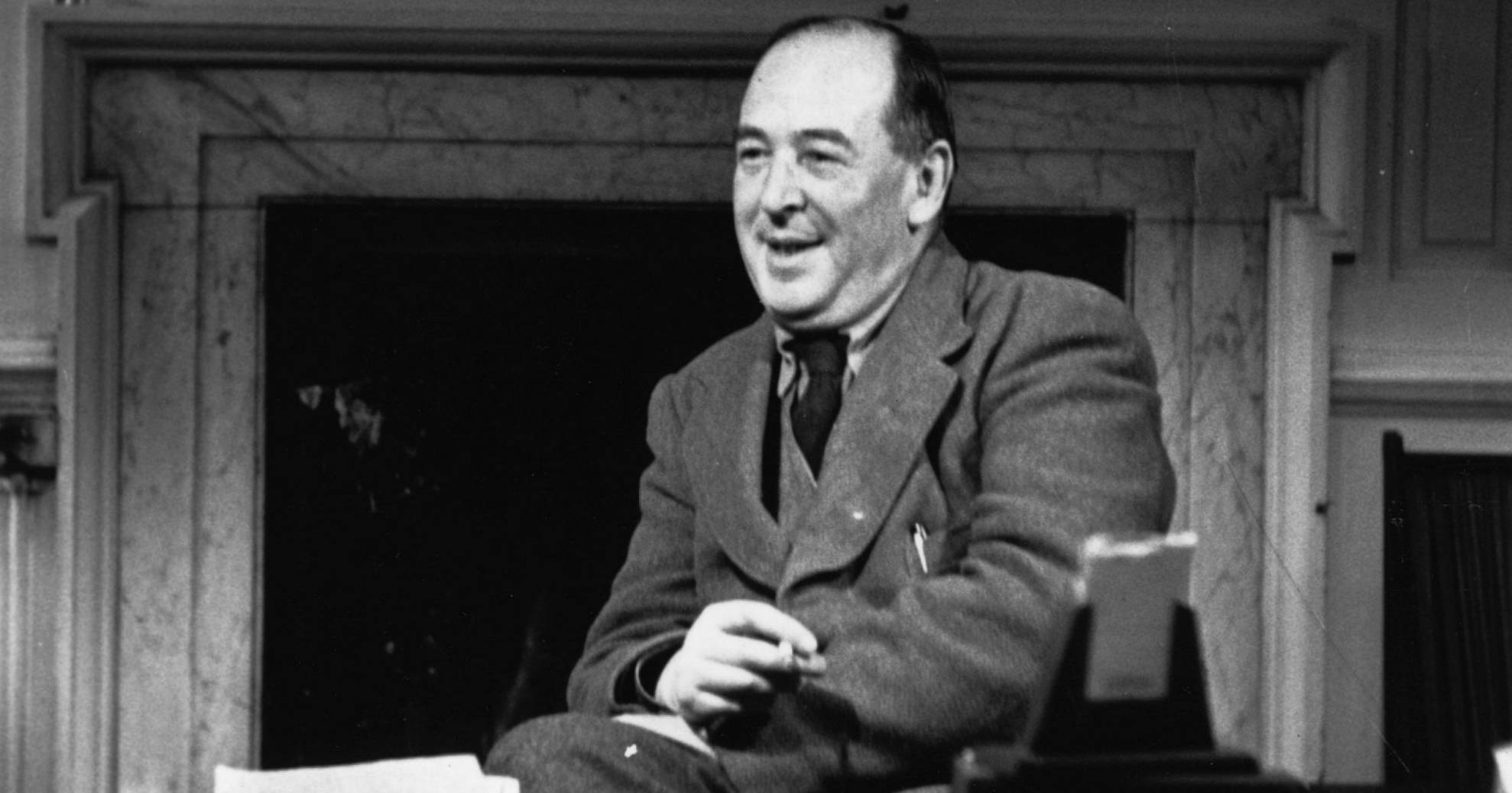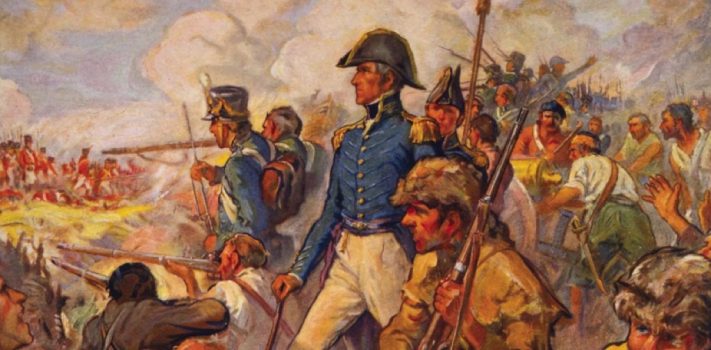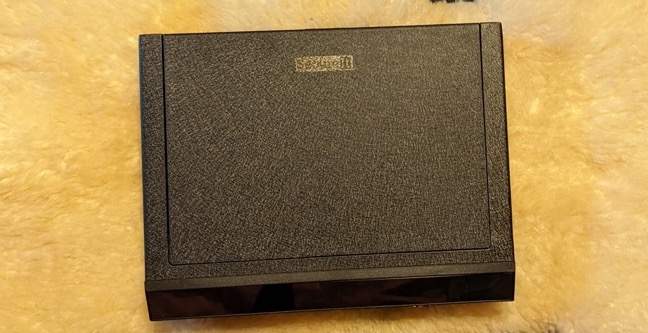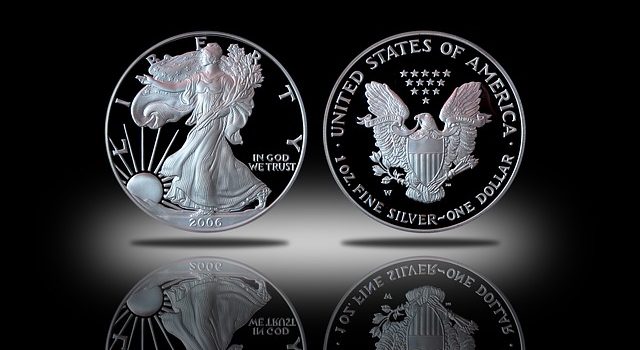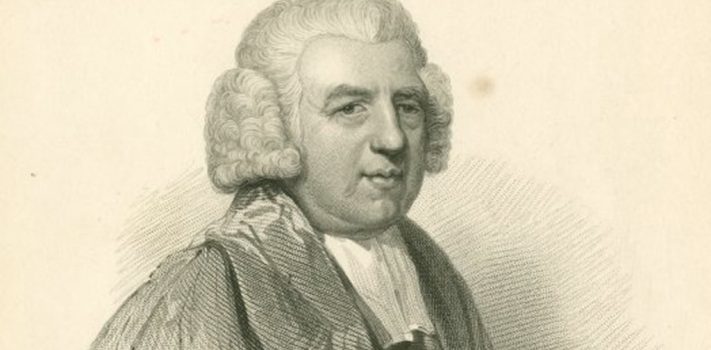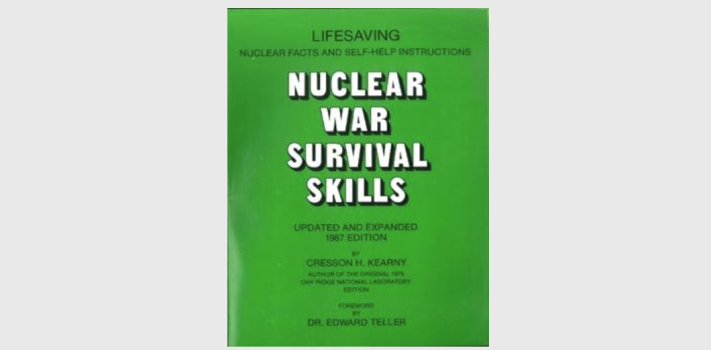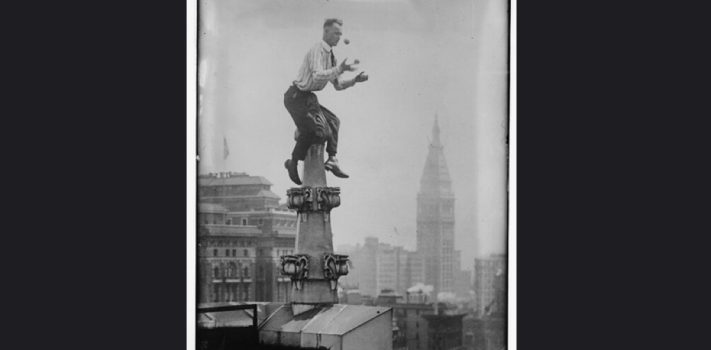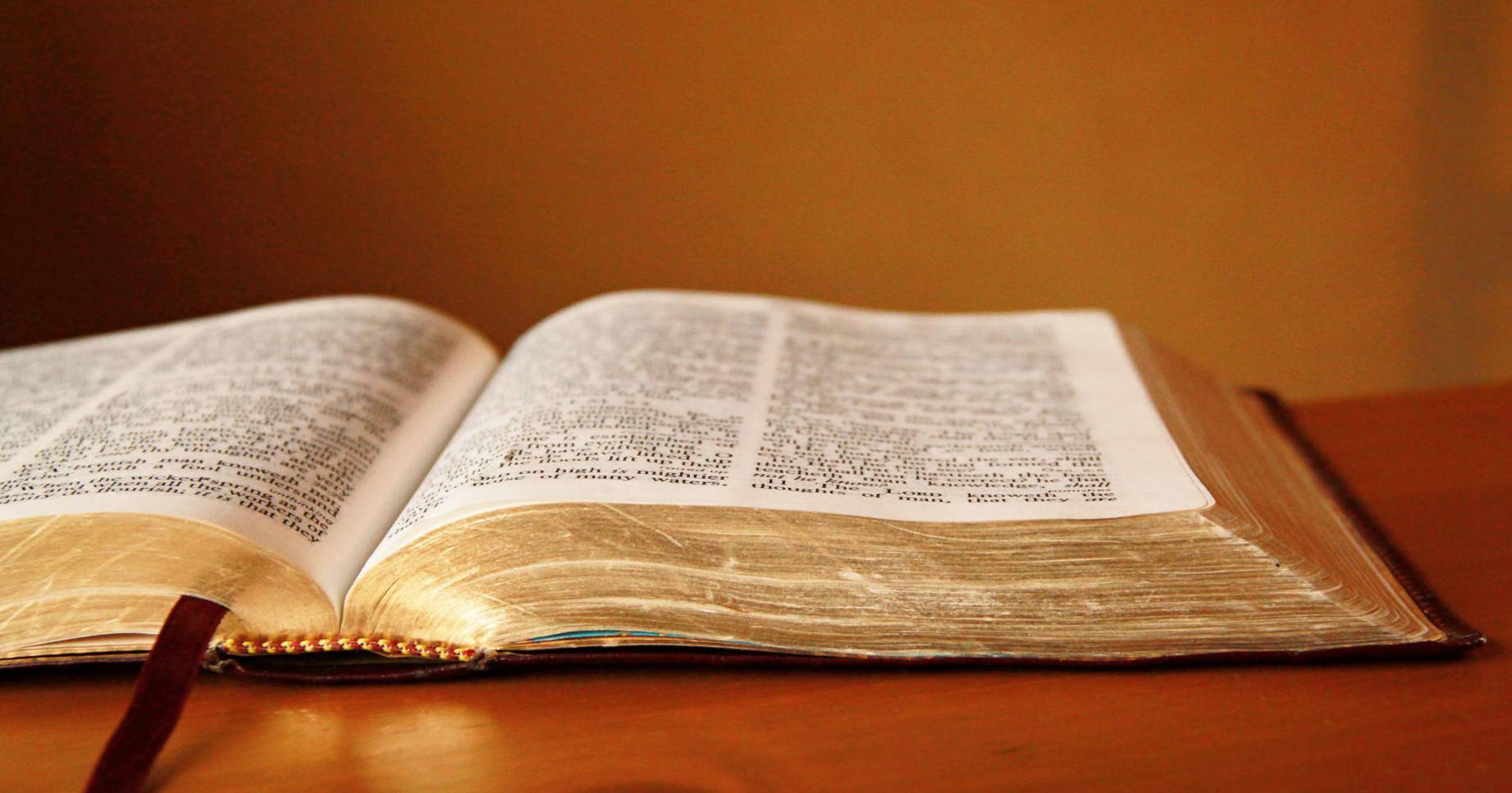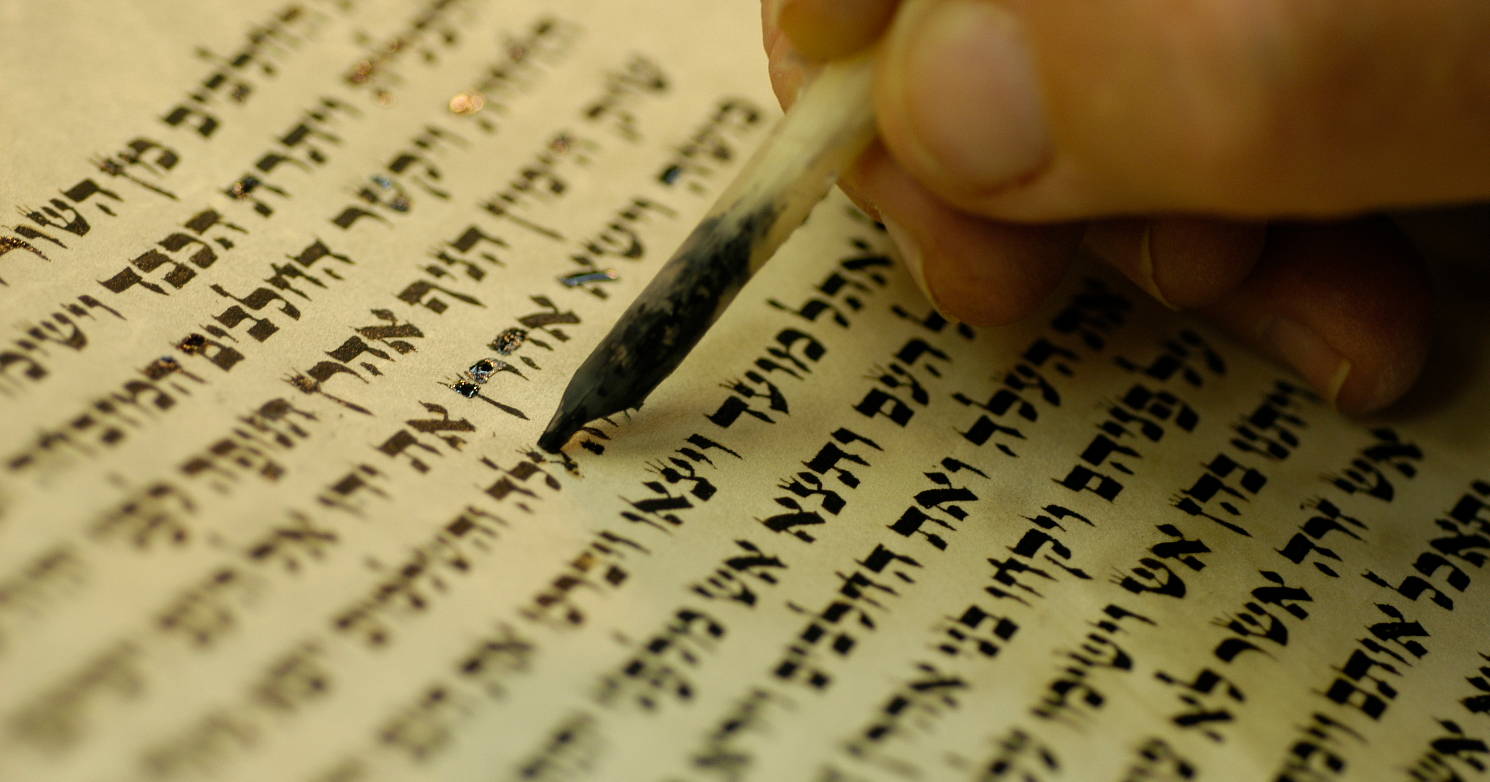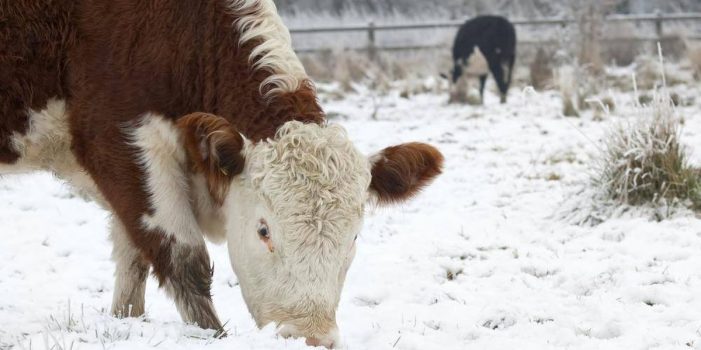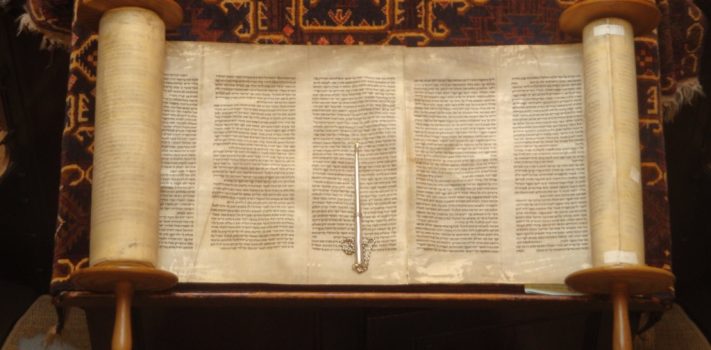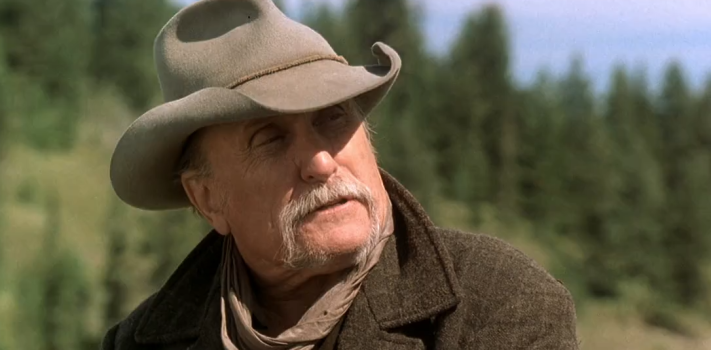“The home is the ultimate career. All other careers exist for one purpose, and that is to support the ultimate career.” – C.S. Lewis
- Ad California Legal Rifles & Pistols!WBT makes all popular rifles compliant for your restrictive state. Choose from a wide range of top brands made compliant for your state.
- Ad Survival RealtyFind your secure and sustainable home. The leading marketplace for rural, remote, and off-grid properties worldwide. Affordable ads. No commissions are charged!
Preparedness Notes for Monday — January 8, 2024
On January 8, 1815, U.S. General Andrew Jackson defeated Great Britain in the Battle of New Orleans, the final engagement in the War of 1812.
On this day in 1997, the principality of Monaco began a yearlong celebration in honour of the 700th anniversary of the rule of the Grimaldi family, who seized power in 1297 and gained firm possession of Monaco in 1419.
On January 8, 1997 Mexican criminal Joaquín Guzmán (“El Chapo”), head of the Sinaloa drug cartel, was captured in Los Mochis after escaping prison some six months earlier; he was later extradited to the United States, where he was convicted of various crimes.
—
I’ve had several readers ask about the availability of the new edition of the waterproof SurvivalBlog Archive USB stick. The new 2005-2023 sticks are now in production. They should be completed, in hand, and orderable by January 20th. Watch for an ad in the blog’s right-hand bar, in about a week. This year the archive and bonus books had to be on a more capacious 32GB stick. Altogether, the contents will be just over 22 Gigabytes. This will leave room for archiving any of your own crucial files, e-books, and photos/document scans on your stick. Each year the SurvivalBlog Archive USB sticks sell out by March or April, so be sure to mark your calendar to place your order well before then. Thanks! – JWR
—
Today’s feature article is a review authored by SurvivalBlog Field Gear Editor Tom Christianson.
- Ad Click Here --> Civil Defense ManualNOW BACK IN STOCK How to protect, you, your family, friends and neighborhood in coming times of civil unrest… and much more!
- Ad Ready Made Resources, Trijicon Hunter Mk2$2000 off MSRP, Brand New in the case
SecureIt HG-02 Pistol Case, by Thomas Christianson
The SecureIt HG-02 Pistol Case offers secure handgun storage which can be mounted in a variety of locations throughout the home to provide quick and reliable access. Available for $129 at the time of this writing, it presents a good value for the money.
Background
I have been searching for an American-made two-handgun lockbox for a while now. So when I ran across the SecureIt HG-02 Pistol Case, I was quite interested. I requested a sample from SecureIt for testing and evaluation, and they were kind enough to provide one. Before long, FedEx delivered a package to my doorstep.
First Impressions
The HG-02 was shipped in its product box with no additional packaging. The box was not sealed, and could be opened just by lifting a cardboard flap. The HG-02 was nestled securely in the box, with foam caps on both ends. By coincidence, the HG-02 has almost the exact same outside dimensions as the case for the Taurus TH9 that I was testing at the time. So when I returned the TH9 to Taurus, I was able to re-purpose the HG-02 product box in order to ship the TH9 in its case.
But back to the HG-02. After I removed it from the product box, I used the provided key to open the case. Inside I found a bag containing instructions and mounting screws. The simple instructions were printed on one side of a standard 8.5 x 11 inch sheet of paper.Continue reading“SecureIt HG-02 Pistol Case, by Thomas Christianson”
- Ad LifeSaver 20K JerryCan Water PurifierThe best water jerrycan you can buy on the market! Mention Survivalblog for a Free Filter ($130 Value)
- Ad USA Berkey Water Filters - Start Drinking Purified Water Today!#1 Trusted Gravity Water Purification System! Start Drinking Purified Water now with a Berkey water filtration system. Find systems, replacement filters, parts and more here.
Recipe of the Week: Potato and Egg Scramble
The following recipe for Potato and Egg Scramble is from SurvivalBlog reader G.G.. He notes: “This recipe is hard to mess up, so you can cook it in a pan on your stovetop, or over an open campfire that is dying down. It serves four adults.”
Ingredients
- 2 Diced Medium Potatoes, chunked or chopped
- 1 Medium-sized onion, chopped
- 2 Chopped Fresh Peppers. (Any color pepper of your choice.)
- 8 Eggs, stirred
- 2 Tablespoons of Butter
- Salt
Directions
-
Cut just 1Tablespoon of butter. Drop that into your cast iron pan and put it over your fire. Spread it around, to coat the pan.
-
Add the potatoes, peppers, and onions. Cook them about 20 minutes, stirring once in a while. Cook until the potatoes are tender. By then, the onions will be browned and the peppers will be cooked to a more mellow flavor.
-
Crack and stir your eggs, in a separate bowl.
- Add the second tablespoon of butter. Once the butter has melted, briefly stir in the eggs. But do not stir the scramble any further. Cover your pan. (Use aluminum foil if you don’t have a lid.) Allow the scramble to cook about 4-to-5 minutes until the eggs are sufficiently cooked through.
- Salt it, to taste, and serve.
SERVING
Serve this scramle hot from the pan!
—
Do you have a well-tested recipe that would be of interest to SurvivalBlog readers? In this weekly recipe column, we place emphasis on recipes that use long-term storage foods, recipes for wild game, dutch oven recipes, slow cooker recipes, and any recipes that use home garden produce. If you have any favorite recipes, then please send them via e-mail. Thanks!
- Ad Don't wait - get the ultimate US-made ultra-high performance US-made SIEGE Stoves and stunning hand-crafted SIEGE belts for Christmas. For stocking-stuffers see our amazing fire-starters. Gifts that can save lives. Big Sale!Every bespoke SIEGE buckle goes through an hours-long artisanal process resulting in a belt unlike anything else, with blazing fast performance and looks and comfort to match.
- Ad Trekker Water Station 1Gal Per MinuteCall us if you have Questions 800-627-3809
Economics & Investing For Preppers
Here are the latest news items and commentary on current economics news, market trends, stocks, investing opportunities, and the precious metals markets. In this column, JWR also covers hedges, derivatives, and various obscura. This column emphasizes JWR’s “tangibles heavy” investing strategy and contrarian perspective. Today, we look at the prospects for the silver market in 2024 and 2025. (See the Precious Metals section.)
Precious Metals:
o o o
At Seeking Alpha: Silver Production Shortage: Mexico’s Supply Has Dropped Off A Cliff.
o o o
USGS: “Worldwide silver supplies will be depleted by 2025”.
o o o
Silver Price Forecast for 2024 – XAG/USD Could Go to $28 Next Year.
Economy & Finance:
Bidenomics, in action: U.S. Manufacturing Contracts For 14th Straight Month.
o o o
The US national debt surpassed $34 trillion on Tuesday, January 2nd. The long-term obligations are of course much larger. Re-paying that debt is now nigh-on impossible. And if interest rates spike, then just paying the interest on the debt will become impossible — leading to an inevitable default. This may sound a lot like the first chapter of my novel Patriots. I tried to warn people about this, back in the early 1990s…
o o o
From The Sun: A stranger helped me tap my card at ATM when the card reader didn’t work – a day later only $5 was left in my account.
o o o
Linked over at the Whatfinger.com news aggregation site: Apple lost $100 billion in market value in one day – more than combined worth of Ford and GM – and ‘lackluster’ sales of one gadget are to blame.
- Ad Civil Defense ManualClick Here --> The Civil Defense Manual... The A to Z of survival. Looks what's in it... https://civildefensemanual.com/whats-in-the-civil-defense-manual/
- Ad USA Berkey Water Filters - Start Drinking Purified Water Today!#1 Trusted Gravity Water Purification System! Start Drinking Purified Water now with a Berkey water filtration system. Find systems, replacement filters, parts and more here.
The Editors’ Quote of the Day:
“When people are right with God, they are apt to be hard on themselves and easy on others” – John Newton
- Ad STRATEGIC RELOCATION REALTYFOR SALE: Self-sustaining Rural Property situated meticulously in serene locales distant from densely populated sanctuary cities. Remember…HISTORY Favors the PREPARED!
- Add Your Link Here
Preparedness Notes for Sunday — January 7, 2024
Today is the birthday of Cresson Kearny (born 1914, died December 18, 2003.) He was the primary author of the now standard reference text: Nuclear War Survival Skills. (The public domain 1987 edition is one of the many bonus books included in the SurvivalBlog Archive USB stick.)
—
January 7th is also the birthday of Bent Faurschou-Hviid, known as The Flame (born 1921, died October 18, 1944). The Flame was a red-haired Danish resistance fighter in the Holger Danske Group during World War II. His exploits were dramatized in the movie Flame and Citron.
—
SurvivalBlog Writing Contest
Today we present another entry for Round 110 of the SurvivalBlog non-fiction writing contest. The prizes for this round include:
First Prize:
- The photovoltaic power specialists at Quantum Harvest LLC are providing a store-wide 10% off coupon. Depending on the model chosen, this could be worth more than $2000.
- A Gunsite Academy Three Day Course Certificate. This can be used for any of their one, two, or three-day course (a $1,095 value),
- Two cases of Mountain House freeze-dried assorted entrees in #10 cans, courtesy of Ready Made Resources (a $350 value),
- American Gunsmithing Institute (AGI) is providing a $300 certificate good towards any of their DVD training courses.
- Two sets of The Civil Defense Manual, (in two volumes) — a $193 value — kindly donated by the author, Jack Lawson.
Second Prize:
- A SIRT STIC AR-15/M4 Laser Training Package, courtesy of Next Level Training, that has a combined retail value of $679
- Two 1,000-foot spools of full mil-spec U.S.-made 750 paracord (in-stock colors only) from www.TOUGHGRID.com (a $240 value).
- Two Super Survival Pack seed collections, a $150 value, courtesy of Seed for Security, LLC.
- Montana Survival Seed is providing a $225 gift code for any items on its website, including organic non-GMO seeds, fossils, 1812-1964 US silver, jewelry, botany books, and Montana beeswax.
- A transferable $150 FRN purchase credit from Elk Creek Company, toward the purchase of any pre-1899 antique gun. There is no paperwork required for delivery of pre-1899 guns into most states, making them the last bastion of firearms purchasing privacy!
Third Prize:
- A Berkey Light water filter, courtesy of Directive 21 (a $305 value),
- A $300 gift certificate from Good2Goco.com, good for any of their products: Home freeze dryers, pressure canners, Country Living grain mills, Emergency Essentials foods, and much more.
- Three sets each of made-in-USA regular and wide-mouth reusable canning lids. (This is a total of 300 lids and 600 gaskets.) This prize is courtesy of Harvest Guard (a $270 value)
- A transferable $150 FRN purchase credit from Elk Creek Company, toward the purchase of any pre-1899 antique gun.
—
More than $870,000 worth of prizes have been awarded since we started running this contest. We recently polled blog readers, asking for suggested article topics. Refer to that poll if you haven’t yet chosen an article topic. Round 110 ends on January 31st, so get busy writing and e-mail us your entry. Remember that there is a 1,500-word minimum, and that articles on practical “how-to” skills for survival have an advantage in the judging.
The Juggling Act: Is 2024 A Pivotal Year For The Globalists, by Brandon Smith
Editor’s Introductory Note: With permission, this piece was authored by political and economics commentator Brandon Smith. It was first published on his excellent Alt-Market.us site. Both his free website and his subscription The Wild Bunch Dispatch e-newsletter are highly recommended.
—
If you want to know if a society is on the verge of great and tumultuous change you need to ask two very important questions – Are the people angry? And, are the people hungry?
In the US (and in many parts of Europe) the people are indeed very angry, for different reasons depending on their political affiliations. On the other hand, they aren’t hungry, at least not to the extent that they are desperate. This could very well change in 2024 given the confluence of events that are swirling as we enter the new year.
I continue to see 2024 as a nexus point of our era for a number of reasons. The globalist timeline for their “Great Reset” mentions 2030 as the prime year for total centralization. This is the year they plan to put their carbon controls in place, remove most oil and gas energy, bring in their digital currency framework, finalize their 15 Minute City programs, establish the IMF and BIS as the overseers of the global CBDC structure, launch their cashless society and integrate ESG related goals into every aspect of the economy.
2030 is only six years away, and that’s a lot to accomplish in such short amount of time. The globalists are going to have to either admit failure and change their timeline, or, create a substantial crisis in the near term to facilitate the Reset. But before I get too far into the potential ugliness waiting in the next year, lets talk about two of the biggest positive developments for 2024…Continue reading“The Juggling Act: Is 2024 A Pivotal Year For The Globalists, by Brandon Smith”
JWR’s Meme Of The Week:
The latest meme created by JWR:
Important Dating Tip For The 2020s:
If “She” Has an Adam’s Apple, Then There May Be Other Extra Appendages
News Links:
UCSF Surgeons Develop Effective Scarless Adam’s Apple Surgery.
Notes From JWR: Do you have a meme idea? Just e-mail me the concept, and I’ll try to assemble it. And if it is posted then I’ll give you credit. Thanks!
Permission to repost memes that I’ve created is granted, provided that credit to SurvivalBlog.com is included.
The Editors’ Quote of the Day:
“He that hath an ear, let him hear what the Spirit saith unto the churches.
And to the angel of the church in Philadelphia write; These things saith he that is holy, he that is true, he that hath the key of David, he that openeth, and no man shutteth; and shutteth, and no man openeth;
I know thy works: behold, I have set before thee an open door, and no man can shut it: for thou hast a little strength, and hast kept my word, and hast not denied my name.
Behold, I will make them of the synagogue of Satan, which say they are Jews, and are not, but do lie; behold, I will make them to come and worship before thy feet, and to know that I have loved thee.
Because thou hast kept the word of my patience, I also will keep thee from the hour of temptation, which shall come upon all the world, to try them that dwell upon the earth.
Behold, I come quickly: hold that fast which thou hast, that no man take thy crown.
Him that overcometh will I make a pillar in the temple of my God, and he shall go no more out: and I will write upon him the name of my God, and the name of the city of my God, which is new Jerusalem, which cometh down out of heaven from my God: and I will write upon him my new name.
He that hath an ear, let him hear what the Spirit saith unto the churches.
And unto the angel of the church of the Laodiceans write; These things saith the Amen, the faithful and true witness, the beginning of the creation of God;
I know thy works, that thou art neither cold nor hot: I would thou wert cold or hot.
So then because thou art lukewarm, and neither cold nor hot, I will spue thee out of my mouth.
Because thou sayest, I am rich, and increased with goods, and have need of nothing; and knowest not that thou art wretched, and miserable, and poor, and blind, and naked:
I counsel thee to buy of me gold tried in the fire, that thou mayest be rich; and white raiment, that thou mayest be clothed, and that the shame of thy nakedness do not appear; and anoint thine eyes with eyesalve, that thou mayest see.
As many as I love, I rebuke and chasten: be zealous therefore, and repent.
Behold, I stand at the door, and knock: if any man hear my voice, and open the door, I will come in to him, and will sup with him, and he with me.
To him that overcometh will I grant to sit with me in my throne, even as I also overcame, and am set down with my Father in his throne.
He that hath an ear, let him hear what the Spirit saith unto the churches.” – Revelation 3:6-22 (KJV)
Preparedness Notes for Saturday — January 6, 2024
On January 6, 2021, supporters of President Donald Trump stormed the U.S. Capitol, where Congress was meeting to certify Joe Biden‘s win in the 2020 election; Trump and his backers alleged widespread voter fraud. Today, three years later, after more than 950 arrests, there are still some defendants awaiting trial. And arrests are still continuing.
—
Today is the birthday of musician Earl Scruggs (1924-2012).
—
Today we present a feature article that was too short to be considered as an entry for Round 110 of the SurvivalBlog non-fiction writing contest. Remember that there is a 1,500-word minimum, and that articles on practical “how-to” skills for survival have an advantage in the judging. More than $870,000 worth of prizes have been awarded since we started running this contest. We recently polled blog readers, asking for suggested article topics. Refer to that poll if you haven’t yet chosen an article topic. Round 110 ends on January 31st, so get busy writing and e-mail us your entry.
The Bible, For Preppers, by K.D.
Wouldn’t it be great if there was a Bible for preppers, a comprehensive book that contains useful information that we really need to know? Well, there is such a book! And it is The Bible.
For those of you who are neither Jewish nor Christian, I ask you to look at the following examples that I’ve compiled, and decide for yourself whether the Bible is a worthwhile source of information, regardless of who you think wrote it.
Aspects of Biblical wisdom are often hidden from the readers. We’re told to do something, or not to do something, but we’re rarely told why, except in the most general terms: “…that you may live long in the land.” So let’s look at a few specific examples.Continue reading“The Bible, For Preppers, by K.D.”
Editors’ Prepping Progress
To be prepared for a crisis, every Prepper must establish goals and make both long-term and short-term plans. In this column, the SurvivalBlog editors review their week’s prep activities and planned prep activities for the coming week. These range from healthcare and gear purchases to gardening, ranch improvements, bug-out bag fine-tuning, and food storage. This is something akin to our Retreat Owner Profiles, but written incrementally and in detail, throughout the year. We always welcome you to share your own successes and wisdom in your e-mailed letters. We post many of those –or excerpts thereof — in the Odds ‘n Sods Column or in the Snippets column. Let’s keep busy and be ready!
Jim Reports:
I recovered from my head cold fairly quickly, so now I’m back to my usual winter routine. I find a certain satisfaction in caring for our livestock. They need a lot more attention in the winter months, and I enjoy spending time with all of those critters. The cows, horses, and chickens can be entertaining. The sheep are… …well, just sheepish. Since we keep an ancient breed, I don’t think they will ever want to cozy up to us.
The various stock tank heaters can be finicky and are easily dislodged, so at least once a week I have to make adjustments. And because the horses, cattle, and sheep do not move around as much this time of year, we have to pay closer attention to their hooves. Some folks might consider livestock care bothersome. But I’ve always enjoyed it. And, given the current Biden Era high prices for meat and eggs, I’m truly thankful that God is providing so wonderfully for our family. Thank you, Lord!
This past week I helped a neighbor re-program his four Baofeng UV5R handie-talkies. We keep one non-licensed frequency set aside for our informal Neighborhood Watch, locally. There are three neighbors within a mile of us, and they all now use Baofengs that are compatible with ours. To make our little watch system a bit more robust, I’ve recently handed out 12 VDC charging cables with Cigarette Lighter plugs to the neighbors. It is good to know that we will be able to keep in touch, even if the power goes out and the telephone system goes dead for one reason or another.
Now, on to Lily’s part of the report…
The Editors’ Quote of the Day:
“Cast thy bread upon the waters: for thou shalt find it after many days.
Give a portion to seven, and also to eight; for thou knowest not what evil shall be upon the earth.
If the clouds be full of rain, they empty themselves upon the earth: and if the tree fall toward the south, or toward the north, in the place where the tree falleth, there it shall be.
He that observeth the wind shall not sow; and he that regardeth the clouds shall not reap.
As thou knowest not what is the way of the spirit, nor how the bones do grow in the womb of her that is with child: even so thou knowest not the works of God who maketh all.
In the morning sow thy seed, and in the evening withhold not thine hand: for thou knowest not whether shall prosper, either this or that, or whether they both shall be alike good.
Truly the light is sweet, and a pleasant thing it is for the eyes to behold the sun:
But if a man live many years, and rejoice in them all; yet let him remember the days of darkness; for they shall be many. All that cometh is vanity.
Rejoice, O young man, in thy youth; and let thy heart cheer thee in the days of thy youth, and walk in the ways of thine heart, and in the sight of thine eyes: but know thou, that for all these things God will bring thee into judgment.
Therefore remove sorrow from thy heart, and put away evil from thy flesh: for childhood and youth are vanity.” – Ecclesiastes 11 (KJV)
Preparedness Notes for Friday — January 5, 2024
American actor Robert Duvall, who was known for his convincing portrayals of a diverse range of characters, was born in San Diego on January 5, 1931. His portrayals in Open Range and Apocalypse Now are unforgettable.
—
This new listing in Sheridan, Montana at SurvivalRealty checks off a lot of boxes: Self-sufficiency! Earth-sheltered Home on 40 Acres.
—
SurvivalBlog Writing Contest
Today we present another entry for Round 110 of the SurvivalBlog non-fiction writing contest. The prizes for this round include:
First Prize:
- The photovoltaic power specialists at Quantum Harvest LLC are providing a store-wide 10% off coupon. Depending on the model chosen, this could be worth more than $2000.
- A Gunsite Academy Three Day Course Certificate. This can be used for any of their one, two, or three-day course (a $1,095 value),
- Two cases of Mountain House freeze-dried assorted entrees in #10 cans, courtesy of Ready Made Resources (a $350 value),
- American Gunsmithing Institute (AGI) is providing a $300 certificate good towards any of their DVD training courses.
- Two sets of The Civil Defense Manual, (in two volumes) — a $193 value — kindly donated by the author, Jack Lawson.
Second Prize:
- A SIRT STIC AR-15/M4 Laser Training Package, courtesy of Next Level Training, that has a combined retail value of $679
- Two 1,000-foot spools of full mil-spec U.S.-made 750 paracord (in-stock colors only) from www.TOUGHGRID.com (a $240 value).
- Two Super Survival Pack seed collections, a $150 value, courtesy of Seed for Security, LLC.
- Montana Survival Seed is providing a $225 gift code for any items on its website, including organic non-GMO seeds, fossils, 1812-1964 US silver, jewelry, botany books, and Montana beeswax.
- A transferable $150 FRN purchase credit from Elk Creek Company, toward the purchase of any pre-1899 antique gun. There is no paperwork required for delivery of pre-1899 guns into most states, making them the last bastion of firearms purchasing privacy!
Third Prize:
- A Berkey Light water filter, courtesy of Directive 21 (a $305 value),
- A $300 gift certificate from Good2Goco.com, good for any of their products: Home freeze dryers, pressure canners, Country Living grain mills, Emergency Essentials foods, and much more.
- Three sets each of made-in-USA regular and wide-mouth reusable canning lids. (This is a total of 300 lids and 600 gaskets.) This prize is courtesy of Harvest Guard (a $270 value)
- A transferable $150 FRN purchase credit from Elk Creek Company, toward the purchase of any pre-1899 antique gun.
—
More than $870,000 worth of prizes have been awarded since we started running this contest. We recently polled blog readers, asking for suggested article topics. Refer to that poll if you haven’t yet chosen an article topic. Round 110 ends on January 31st, so get busy writing and e-mail us your entry. Remember that there is a 1,500-word minimum, and that articles on practical “how-to” skills for survival have an advantage in the judging.

